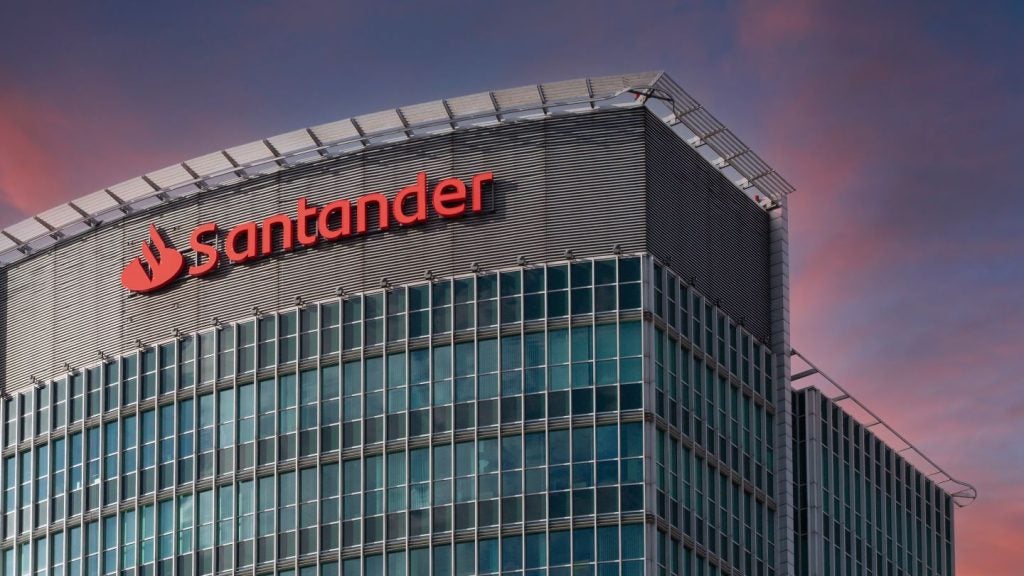US mobile banking services provider Simple demonstrates just how many services direct banks can offer with just smartphones and no branches. Robin Arnfield reports
Portland, Oregon-based FinTech firm Simple Finance Technology was acquired in February 2014 by BBVA Group as a digital pace-setter for the Madrid-based bank’s global operations. The deal valued Simple at $117m.
BBVA’s Chairman and CEO, Francisco González, wants to turn BBVA into a totally digital business, with over 100,000 employees working digitally. “We’re aiming to build a better customer experience and betting heavily on digital transformation,” he told BBVA’s 2015 AGM in Madrid.
“Simple will reinforce our global digital transformation,” González said at the time of Simple’s acquisition.
BBVA owns leading Mexican bank BBVA Bancomer, BBVA Compass in the US, and a 39.9% stake in Turkey’s Garanti Bank. It also has operations in Argentina, Bolivia, Brazil, Chile, Colombia, Paraguay, Peru, Uruguay and Venezuela.
FinTech

US Tariffs are shifting - will you react or anticipate?
Don’t let policy changes catch you off guard. Stay proactive with real-time data and expert analysis.
By GlobalDataSimple is one of a clutch of investments in US FinTech start-ups made by San Francisco-based BBVA Ventures which included a January 2015 investment in US Bitcoin firm Coinbase.
BBVA considers the US a market ripe for growth through technology. “The US is the most digitised country in the world, but its banking services remain obsolete,” President and COO Ángel Cano said at BBVA’s 2015 AGM.
By the time of Simple’s acquisition, BBVA already offered mobile and online banking services in the US through BBVA Compass, which operates 673 branches in Texas, Alabama, Arizona, Colorado and New Mexico. But Simple represents BBVA’s first US departure into branchless banking.
The BBVA acquisition was heralded by Simple’s co-founder, Joshua Reich as a means of expanding Simple beyond the US to create a global footprint. BBVA said the acquisition was in line with its strategy of investing in the new technologies and ‘disruptive’ initiatives transforming the financial services industry. The group is geared toward high-growth markets, and relies on technology as a key sustainable competitive advantage.
History
Simple was founded in 2009 and launched commercially in July 2012. “Simple was born out of frustration with the realisation that most US banks make money by keeping their customers confused,” says Simple spokesperson Lauren Berg. “Our customers are at the heart of all we do, and our mission is to help people feel confident with their money.”
Reich and co-founder Shamir Karkal started offering mobile banking with Wilmington, Delaware-based The Bancorp Bank as their bank partner and platform provider. This makes Simple a ‘neo-bank’, a FinTech company without a banking charter of its own.
Karkal recently joined BBVA Group in a newly created-role as Head of Open APIs (Application Programme Interfaces). Using its open API ‘BBVA has a huge opportunity to open up our core platform and services, in turn enabling others to build companies on top of these and thereby helping us build a new business,’ Karkal said in a statement.
Moving its banking platform away from Bancorp has been part of Simple’s roadmap post-acquisition. “By joining forces with BBVA, we’ll be able to jointly gain complete end-to-end ownership of the customer experience, from our mobile apps all the way through the core banking stack,” Reich said in February 2014. “This will give us a phenomenal degree of flexibility and control that will enable entirely new innovations.”
Simple plans to move all of its customer accounts to BBVA Compass’ real-time banking platform to enable Simple to offer a broader product portfolio. The development will make Simple the first actual user of BBVA’s Open API in the US. “Our technical teams are actively working with BBVA in preparation to replace our current partner bank, Bancorp, with BBVA Compass,” said Berg.
By February 2014, Simple had 100,000 customers across the US, but doesn’t disclose its current customer numbers. “A team of just under 300 is fuelling monthly customer growth that’s on par with a bank that would have 850 branches or 5,600 branch employees,” said Berg. Simple continues to operate as a separate business within BBVA, led by Reich as CEO.
Account features
The Simple account has been designed primarily for use with smartphones, giving customers immediate access to their money wherever they are. However, all features except Photo Check Deposits are accessible on the web. The Simple app runs on iOS and Android devices.
Simple customers get prepaid Visa debit cards issued by its partner bank, which pays Simple a share of its interest margin on deposits plus a share of debit card transaction interchange fees.
To increase its revenues, Simple encourages customers to use their accounts by providing a range of personal finance tools and no-fee services. Transactions that exceed the customer’s available balance are declined, so there are no overdraft fees or interest.
Simple’s approach doesn’t impress Ron Shevlin, Director of Research at US-based Cornerstone Advisors. ‘Simple has really become just a prepaid debit card,’ he says. “Yes, the online account opening process is very easy, which is a differentiator, but it really isn’t a replacement for a chequeing account.”
Nevertheless, while it doesn’t offer chequebooks, Simple is doing a lot to make its debit cards work more like chequeing accounts.
In September 2015, Simple said it would eliminate all fees and absorb the cost of pass-through fees including Treasurer’s Cheque fees, Over the Counter Cash Withdrawal fees, and Expedited Delivery fees.
Simple’s no-fee banking model is disruptive in the US. In 2011, non-sufficient funds (NSF) and overdraft fees (OD) generated an estimated $12.6bn for the US banking industry, according to a 2013 report by the Consumer Financial Protection Bureau, entitled “CFPB Study of Overdraft Programmes”, customers on average paid between $147 and $298 NSF/OD fees, the CFPB said.
Work-arounds
Simple uses work-arounds to deliver services similar to those provided by bricks-and-mortar banks. Its customers can pay bills free of charge to almost any business or individual in the US. Larger businesses are paid electronically, while other payees are mailed cheques.
Customers can request treasurer’s cheques drawn from their Simple account and mailed to them. If they need cheques quickly, they are advised to buy a US Postal Service money order from a USPS branch with their Simple card.
There is a roundabout way of getting cash into Simple accounts. Customers are instructed to pick up a money order from a convenience store or USPS branch and deposit it into their account via Photo Check Deposit or by mail.
If customers have an account with another bank, they can deposit cash at this bank’s branches and do bank-to-bank transfers between that account and their Simple account. They can also link their Simple accounts with services such as PayPal and Mint.
Customers send and receive funds instantly to accounts held by other Simple customers by adding the recipient’s email address and phone number to their Instant contacts.
Customers can withdraw up to $500 a day from the 55,000 ATMs in the STAR surcharge-free network. An ATM finder enables customers to find the nearest STAR ATM. They can also get fee-free cash advances of up to $5,000 a day on their Simple card by showing photo ID to tellers at branches of most major banks.
Safe-to-Spend
To help customers stay out of financial trouble and continue using their debit cards, Simple offers the Safe-to-Spend feature that tells them how much money they can spend safely. “Instead of designing for how banks work, we design for how people think,” Reich says. “When people log into their account, they don’t want to do accounting mathematics to calculate how much money is available. They want to know if they’re living within their limits. So the first thing you see when you log into Simple is Safe-to-Spend.”
“Whenever you do a transaction on Simple, you’ll receive a push notification, and the activity will immediately appear in your transaction feed,” said Simple spokesperson Amy Dunn. “Your Safe-to-Spend – our improvement on the standard account balance – will immediately update as well. This means you always have an accurate picture of how much money is in your account, and what you can spend without dipping into your savings goals. It’s typical that, when you’re paying your bill, the notification and transaction will hit your Simple app before the cashier has handed you your receipt.”
A planning aid that works in tandem with Safe-to-Spend is Simple’s Goal feature. “A customer could be at a store, see a jacket they want to buy, but see that their Safe-to-Spend is low, and say ‘rather than buy this today, I’ll set up a Goal right now and I’ll save up responsibly over three months,'” Reich explained. “If you present finance in language that customers understand, they can do the things they want to do.”
Data
Data analytics is a keystone of BBVA’s vision for Simple. “We’re witnessing the dawn of Big Data technology,” BBVA’s González told Harvard Business School’s November 2015 Strategy Research Conference.
González said banks should maximise their most important and competitive advantage – data. They should become data-driven organisations in order to deliver knowledge-based banking, providing financial products and services that fulfil each customer’s needs and expectations. “Our Big Data teams in Spain and in the US are working in areas such as customer analytics, processes, risk and fraud, and new data products,” he said.
In early 2014, Simple was a mid-stage start-up with only a single analytics-focused employee, wrote Jeff Klukas, a Data Engineer at Simple, in a blog titled ‘Building Analytics at Simple’. After two years of BBVA partnership, Simple has a Director of Data leading a team of five engineers and five analysts, he wrote.
Klukas says Simple has developed near real-time analytics that its staff use to improve Simple’s banking app by understanding how customers interact with it; control risk and fraud; improve customer relations; and provide metrics to guide the company’s direction.
Customer Service
Simple relies on a combination of qualitative and quantitative customer data to develop products, said Berg. “On the one hand, our team of data scientists provides on-going reporting and key insights into how our customers use Simple,” she said. “At the same time, we gauge how our customers feel about Simple with a monthly Net Promoter Score survey. This is a modern alternative to traditional customer surveys, that gauges a customer’s brand loyalty by asking how likely they are to recommend Simple to their friends. Our core measure of success is that of our customers and how happy they are using Simple.”
Simple doesn’t pigeon-hole people according to their age, Berg said. “Millennials aged 18-35 may be our largest demographic, but our customers range from ages 18-82,” she said. “We prefer to think of these individuals as sharing a psychographic, the desire for intuitive, on-demand, mobile banking, not branches. That being said, we constantly work to deliver a customer-centric product by listening and responding to their wants and needs – regardless of their demographic.”
Simple has integrated in-app support messaging, Twitter and Facebook agent responders, and a grassroots customer appreciation programme, Berg said. “On the social front, we love to connect with our customers on Facebook and Instagram,” she said. “This means Simple customers get quick, efficient support plus the occasional gift.”







